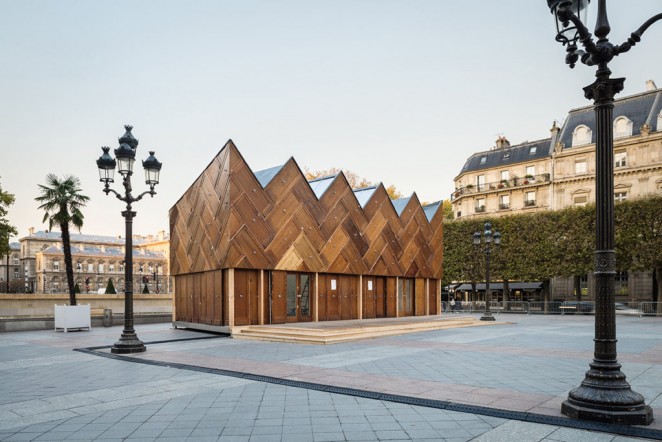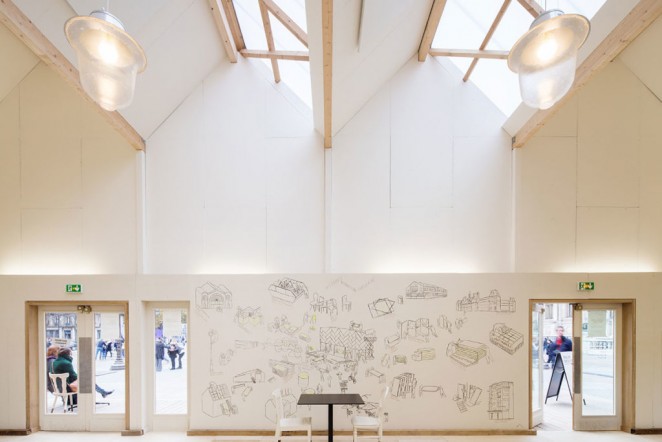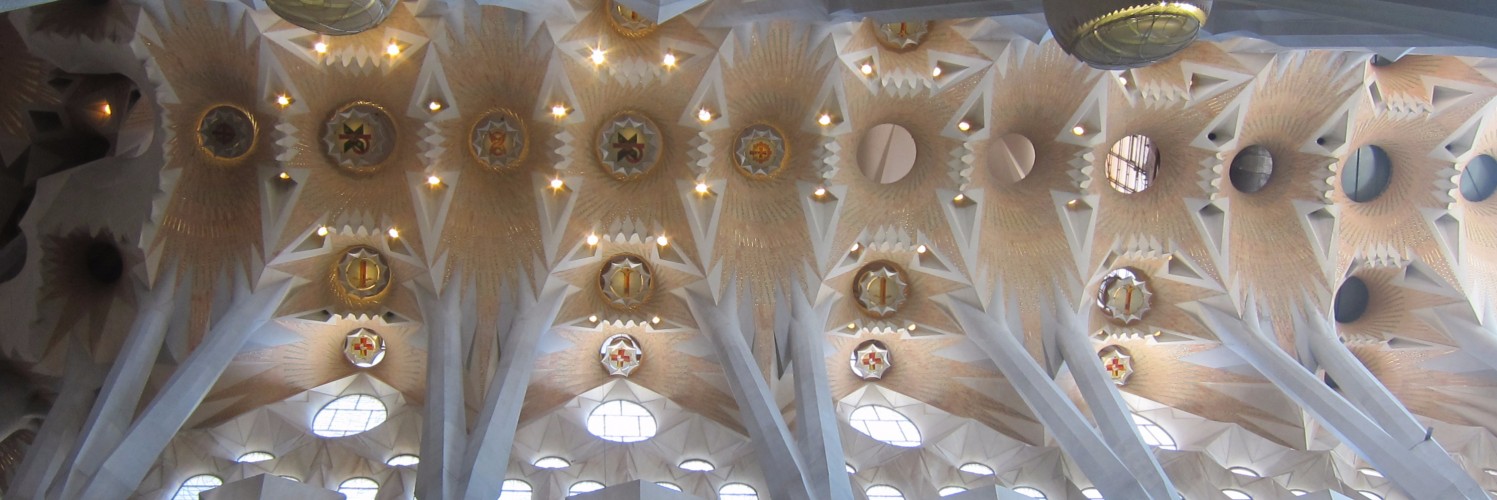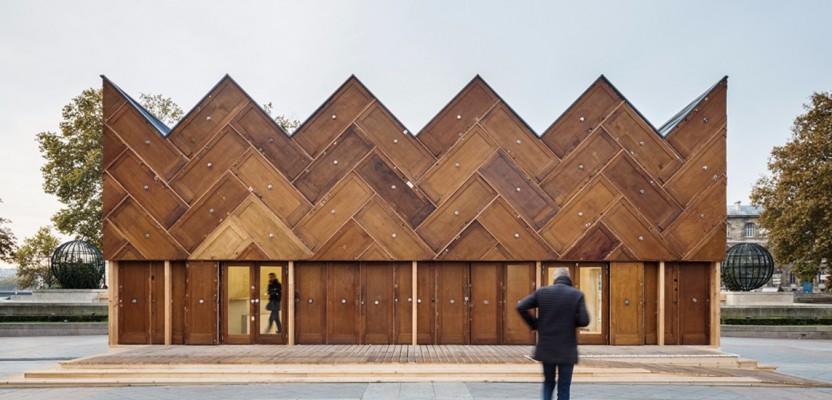What if the future of construction was in rubbish bins and sacks of rubble? Strange as it may sound, this is the opinion of architects Julien Choppin and Nicola Delon of the agency "Encore Heureux," who consider refuse material as a viable construction medium to be utilized in architectural structures and interior design. So in order to prove that it is possible to do beautiful things with recycled materials, they designed the circular Pavilion. The concept of the building was to highlight the possibilities of reducing the consumption of raw materials and resources in the design process; as the problem of waste management is central to the practice of architects.
This public building was commissioned by the city of Paris, upstream of the COP21, and was intended to show the city's commitment to exhibiting projects in public space, which demonstrate that we can do a lot with little. For the result to match their ambitions, they appealed to the agency Encore Heureux to design a building with low environmental impact, following the principles of circular economy. That is to say, this building was manufactured only with reused materials.
When the waste of some is the resources of others:
The building is primarily composed of a wooden structure. This is because the construction industry accounting for over half of all deposits in UK landfills and 32% of total waste in the EU. The cleats of the structure were recovered from the surplus of an order for office buildings. Next, the pavilion consists of an insulation layer made from rock wool; again the excess of a shopping center site. Then, the structure was covered with an astonishingly stylish cladding, in a herringbone pattern, consisting of 180 oak doors originating from the rehabilitation of a residential building located in the 19th arrondissement.
 Finally, for the interior design, the lighting comes from the recovery of street lights and the floor is made up of old wooden exhibition stands from the Pavillon de l'Arsenal. The furniture comes from collections collected from Parisian garbage dumps, having been repaired and repainted in order to create a uniformity between all these somewhat eclectic elements.
Finally, for the interior design, the lighting comes from the recovery of street lights and the floor is made up of old wooden exhibition stands from the Pavillon de l'Arsenal. The furniture comes from collections collected from Parisian garbage dumps, having been repaired and repainted in order to create a uniformity between all these somewhat eclectic elements.
This experimental approach demonstrates that it is possible to do something elegant from recycled materials. The circular pavilion, was built as part of an ephemeral manifestation. As a result of this the building was auctioned and sold, for the modest sum of 10 Euros!
That is why it is especially important to take account of the environmental impact of the materials used.
It hosted a rich program, open to all and free access:
During its installation on the forecourt of the town hall, the pavilion was a multicultural place, hosting exhibitions, debates, and meetings: Thus this place was both a demonstrator of the potential of "reusability" in architecture but also a convivial place. The circular pavilion was a place of exchange and encounters.

Every Tuesday evening there were organized debates or conferences with the aim of providing a space for circular economy actors, whether architects, town planners or landscapers. The goal was to reflect together on how to create more sustainable cities. In addition to this, on every Wednesday, Saturday, and Sunday there were organized workshops and puppet shows aimed at the general public; focussing on themes of societal issues, such as living together, ecological habitats and waste. Furthermore, the pavilion also included a solidarity café and restaurant, where chef Pierre Sang promoted circular gastronomy, using the surplus food from neighbourhood restaurants to concoct tasty dishes and reduce food waste.
In short, the purpose of the program was to promote a new economy; the social, solidarity and circular economy. Unfortunately, the adventure of the circular pavilion does not last any longer, but it demonstrates how creativity and sustainability can have a significant impact on both societal and architectural development.



